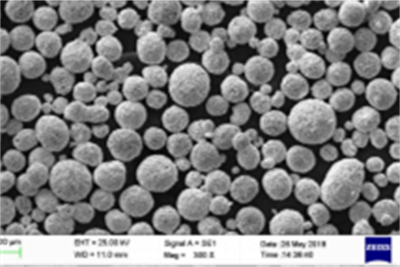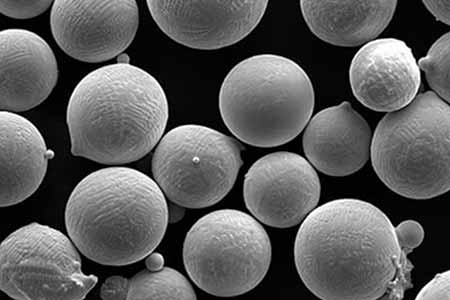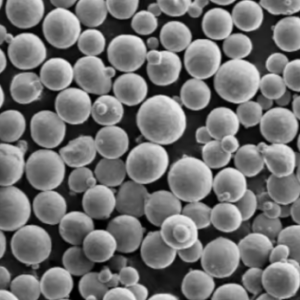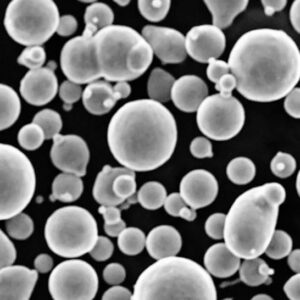Übersicht
Die Divergierendes Adaptives Produktionssystem (DAPS) ist ein bahnbrechender Ansatz im Fertigungssektor, der fortschrittliche Technologien zur Optimierung von Produktionsprozessen einsetzt. Dieses System passt sich an unterschiedliche Produktionsanforderungen an und steigert die Effizienz, Flexibilität und Nachhaltigkeit. Durch die Integration innovativer Methoden und hochmoderner Materialien bietet DAPS eine transformative Lösung für die Herausforderungen der modernen Fertigung.
Was ist ein Divergentes Adaptives Produktionssystem (DAPS)?
DAPS ist so konzipiert, dass es dynamisch auf Veränderungen der Produktionsanforderungen, der Materialien und der Marktbedingungen reagieren kann. Im Gegensatz zu herkömmlichen starren Produktionssystemen basiert DAPS auf Flexibilität und Anpassungsfähigkeit und ermöglicht es Herstellern, sich schnell umzustellen und unterschiedliche Anforderungen zu erfüllen. Dieses System nutzt eine Kombination digitaler Technologien wie KI, IoT und Big-Data-Analytik, um Prozesse in Echtzeit zu überwachen und anzupassen und so optimale Leistung und minimalen Ausschuss zu gewährleisten.
Hauptmerkmale von DAPS:
- Anpassungsfähigkeit: Lässt sich leicht an Änderungen der Produktionsanforderungen und Materialien anpassen.
- Effizienz: Optimiert die Ressourcennutzung und minimiert die Verschwendung durch Anpassungen in Echtzeit.
- Nachhaltigkeit: Einsatz von umweltfreundlichen Verfahren und Materialien zur Verringerung der Umweltbelastung.
- Skalierbarkeit: Geeignet für kleine und große Produktionsanforderungen.
- Integration: Lässt sich nahtlos in bestehende Fertigungssysteme und -prozesse integrieren.
Metallpulver in DAPS
Metallpulver spielen eine entscheidende Rolle bei DAPS, insbesondere bei der additiven Fertigung und bei 3D-Druckanwendungen. Diese Pulver müssen bestimmte Kriterien hinsichtlich Zusammensetzung, Partikelgröße und Eigenschaften erfüllen, um Qualität und Konsistenz der Endprodukte zu gewährleisten.

Arten von Metallpulvern, die in DAPS verwendet werden
| Typ | Zusammensetzung | Eigenschaften | Anwendungen |
|---|---|---|---|
| Titan-Legierung | Ti-6Al-4V | Hohe Festigkeit, Korrosionsbeständigkeit | Luft- und Raumfahrt, medizinische Implantate |
| Rostfreier Stahl | 316L, 17-4 PH | Korrosionsbeständigkeit, Langlebigkeit | Automobilindustrie, Industrieanlagen |
| Aluminium-Legierung | AlSi10Mg | Leichtes Gewicht, gute mechanische Eigenschaften | Luft- und Raumfahrt, Automobilindustrie, Konsumgüter |
| Nickel-Legierung | Inconel 718, 625 | Hohe Temperaturbeständigkeit | Turbinenschaufeln, Luft- und Raumfahrt |
| Kobalt-Chrom | CoCr | Abriebfestigkeit, Biokompatibilität | Medizinische Implantate, Zahnprothetik |
| Kupfer-Legierung | CuCrZr | Hohe Leitfähigkeit | Elektrische Komponenten, Wärmetauscher |
| Werkzeugstahl | H13, M2 | Härte, Verschleißfestigkeit | Formen, Gesenke, Schneidwerkzeuge |
| Wolfram | W | Hohe Dichte, hoher Schmelzpunkt | Luft- und Raumfahrt, Verteidigung, elektrische Kontakte |
| Bronze | Cu-Sn-Legierungen | Geringe Reibung, gute Verschleißeigenschaften | Lager, Buchsen, Skulpturen |
| Magnesium-Legierung | AZ91D, WE43 | Geringes Gewicht, gute Festigkeit im Verhältnis zum Gewicht | Automobilindustrie, Luft- und Raumfahrt, Elektronik |
Anwendungen von Metallpulvern in DAPS
| Anmeldung | Beschreibung |
|---|---|
| Luft- und Raumfahrt | Herstellung von leichten, hochfesten Komponenten für Luft- und Raumfahrzeuge |
| Automobilindustrie | Herstellung von langlebigen, leichten Teilen zur Verbesserung der Kraftstoffeffizienz und Leistung |
| Medizinische Implantate | Herstellung von biokompatiblen Implantaten und Prothesen |
| Industrielle Ausrüstung | Herstellung von robusten Maschinen und Werkzeugen für verschiedene industrielle Anwendungen |
| Konsumgüter | Entwicklung kundenspezifischer und langlebiger Konsumgüter |
| Elektrische Komponenten | Herstellung von hochleitfähigen Teilen für elektronische Geräte |
| Verteidigung | Herstellung von hochdichten Komponenten für militärische Anwendungen |
| Wärmetauscher | Schaffung von effizienten Wärmemanagementsystemen |
| Skulpturen und Kunst | Anfertigung komplizierter und dauerhafter Kunstwerke |
| Schneidewerkzeuge | Herstellung von hochharten, verschleißfesten Werkzeugen |
Spezifikationen von Metallpulvern für DAPS
| Typ | Partikelgröße (µm) | Reinheit (%) | Dichte (g/cm³) | Normen |
|---|---|---|---|---|
| Titan-Legierung | 15-45 | >99.5 | 4.43 | ASTM F2924, AMS 4998 |
| Rostfreier Stahl | 10-50 | >99.5 | 7.8 | ASTM A240, ASTM F138 |
| Aluminium-Legierung | 20-60 | >99.8 | 2.7 | ASTM B209, ISO 3522 |
| Nickel-Legierung | 15-45 | >99.5 | 8.44 | ASTM B637, AMS 5662 |
| Kobalt-Chrom | 10-50 | >99.5 | 8.3 | ASTM F75, ISO 5832-4 |
| Kupfer-Legierung | 15-60 | >99.9 | 8.96 | ASTM B152, EN 1652 |
| Werkzeugstahl | 20-50 | >99.5 | 7.8 | ASTM A681, ISO 4957 |
| Wolfram | 10-45 | >99.9 | 19.3 | ASTM B777, MIL-T-21014 |
| Bronze | 20-80 | >99.8 | 8.8 | ASTM B584, EN 1982 |
| Magnesium-Legierung | 20-60 | >99.9 | 1.74 | ASTM B93, AMS 4377 |
Lieferanten und Preisangaben
| Anbieter | Metallpulver-Typen | Preisspanne (pro kg) | Standort | Kontaktinformationen |
|---|---|---|---|---|
| Höganäs AB | Titan, rostfreier Stahl | $200 – $400 | Schweden | Website |
| GKN Hoeganaes | Aluminium, Nickel, Kobalt-Chrom | $150 – $350 | USA | Website |
| LPW-Technologie | Werkzeugstahl, Wolfram | $250 – $500 | UK | Website |
| Arcam AB | Titan, Aluminium | $180 – $380 | Schweden | Website |
| Zimmermannspulver | Nickel, Kobalt-Chrom | $220 – $450 | USA | Website |
| AP&C | Rostfreier Stahl, Aluminium | $170 – $330 | Kanada | Website |
| TLS Technik | Kupfer, Bronze | $140 – $300 | Deutschland | Website |
| Sandvik | Werkzeugstahl, Nickel | $230 – $460 | Schweden | Website |
| Tekna | Titan, rostfreier Stahl | $200 – $400 | Kanada | Website |
| Erasteel | Wolfram, Werkzeugstahl | $240 – $470 | Frankreich | Website |
Vorteile und Nachteile von Metallpulvern in DAPS
| Metallpulver Typ | Vorteile | Benachteiligungen |
|---|---|---|
| Titan-Legierung | Hohe Festigkeit im Verhältnis zum Gewicht, Korrosionsbeständigkeit | Hohe Kosten, schwierig zu verarbeiten |
| Rostfreier Stahl | Ausgezeichnete Korrosionsbeständigkeit, Haltbarkeit | Höhere Dichte, schwieriger zu bearbeiten |
| Aluminium-Legierung | Leichtes Gewicht, gute Wärmeleitfähigkeit | Geringere Festigkeit im Vergleich zu einigen Legierungen |
| Nickel-Legierung | Hohe Temperaturbeständigkeit, gute mechanische Eigenschaften | Teuer, begrenzte Verfügbarkeit |
| Kobalt-Chrom | Biokompatibilität, Verschleißfestigkeit | Hohe Kosten, schwierig zu verarbeiten |
| Kupfer-Legierung | Hohe elektrische und thermische Leitfähigkeit | Hohe Dichte, Anfälligkeit für Oxidation |
| Werkzeugstahl | Hohe Härte, Verschleißfestigkeit | Höhere Kosten, schwieriger zu bearbeiten |
| Wolfram | Hohe Dichte, hoher Schmelzpunkt | Sehr hohe Kosten, schwierig zu verarbeiten |
| Bronze | Gute Verschleißeigenschaften, geringe Reibung | Geringere Festigkeit im Vergleich zu einigen Metallen |
| Magnesium-Legierung | Geringes Gewicht, gutes Verhältnis von Festigkeit zu Gewicht | Entflammbarkeit, geringere Korrosionsbeständigkeit |
Merkmale von Divergierendes Adaptives Produktionssystem (DAPS)
Anpassungsfähigkeit
Eines der herausragenden Merkmale von DAPS ist seine Anpassungsfähigkeit. Stellen Sie sich eine Fabrikhalle vor, die eher einem lebenden Organismus als einem statischen Fließband gleicht. Sie kann ihre Abläufe in Reaktion auf Echtzeitdaten anpassen, ähnlich wie ein Chamäleon seine Farbe ändert, um sich an verschiedene Umgebungen anzupassen. Diese Flexibilität bedeutet, dass DAPS nahtlos umschalten kann, egal ob Sie an einem Tag Komponenten für die Luft- und Raumfahrt oder am nächsten Tag Teile für die Automobilindustrie produzieren.
Wirkungsgrad
Effizienz ist der Name des Spiels mit DAPS. Herkömmliche Fertigungssysteme können verschwenderisch sein und laufen oft auch dann auf Hochtouren, wenn es gar nicht nötig ist. DAPS hingegen ist wie ein intelligenter Thermostat für Ihre Produktionslinie, der den Energie- und Materialverbrauch entsprechend dem aktuellen Bedarf optimiert. Dadurch werden nicht nur die Kosten gesenkt, sondern auch die Umweltauswirkungen minimiert - eine Win-Win-Situation.
Skalierbarkeit
Skalierbarkeit ist ein weiterer Pluspunkt von DAPS. Ganz gleich, ob Sie ein Startup-Unternehmen mit einer kleinen Produktionsserie oder ein etablierter Hersteller mit großen Betrieben sind, DAPS lässt sich entsprechend vergrößern oder verkleinern. Es ist wie ein Fertigungssystem mit einem Lautstärkeregler, mit dem Sie den Produktionsausstoß erhöhen oder verringern können, ohne Effizienz- oder Qualitätseinbußen hinnehmen zu müssen.
Zusammensetzung des Divergenten Adaptiven Produktionssystems (DAPS)
Die Zusammensetzung von DAPS umfasst eine Mischung aus fortschrittlichen Technologien und Materialien, die alle eine entscheidende Rolle für die Gesamtfunktionalität spielen. Hier ist eine Aufschlüsselung der wichtigsten Komponenten:
In DAPS integrierte Technologien
| Technologie | Funktion |
|---|---|
| Künstliche Intelligenz (KI) | Entscheidungsfindung und Prozessoptimierung in Echtzeit |
| Internet der Dinge (IoT) | Verbindung von Maschinen und Geräten für nahtlose Kommunikation |
| Big Data-Analytik | Analyse großer Datenmengen zur Verbesserung der Produktionseffizienz |
| Additive Fertigung | Herstellung komplexer Teile mit Präzision und minimalem Ausschuss |
| Robotik | Automatisierung von sich wiederholenden Aufgaben und Verbesserung der Präzision |
| Erweiterte Realität (AR) | Unterstützung bei der Wartung und Schulung durch immersive Visualisierungen |
Wichtige Materialien in DAPS
| Material | Eigenschaften | Rolle in der DAPS |
|---|---|---|
| Metall-Pulver | Verschiedene Zusammensetzungen und Eigenschaften | Einsatz in additiven Fertigungsverfahren |
| Verbundwerkstoffe | Leichtes Gewicht, hohe Festigkeit | Strukturelle Komponenten, die das Gewicht reduzieren |
| Intelligente Materialien | Reagieren auf Umweltveränderungen | Adaptive Komponenten in Maschinen |
| Nanomaterialien | Verbesserte mechanische und elektrische Eigenschaften | Verbesserung der Materialleistung |
| Hochleistungs-Polymere | Langlebigkeit, Flexibilität | Isolierung, Schutzhüllen |
Vorteile des Divergenten Adaptiven Produktionssystems (DAPS)
Flexibilität in der Produktion
Stellen Sie sich vor, Sie sind ein Küchenchef, der jedes Gericht im Handumdrehen zaubern kann, unabhängig von den vorhandenen Zutaten. Das ist das Maß an Flexibilität, das DAPS in der Produktion bietet. Es kann sich an unterschiedliche Materialien, Designs und Produktionsmengen anpassen, ohne dass es zu erheblichen Ausfallzeiten oder Umstellungen kommt. Dies ist besonders für Branchen von Vorteil, die schnell auf Marktveränderungen oder kundenspezifische Aufträge reagieren müssen.
Kosteneffizienz
DAPS ist wie ein Finanzberater, der Ihnen hilft, das Beste aus jedem Dollar herauszuholen. Durch die Optimierung der Ressourcennutzung und die Verringerung der Verschwendung senkt es die Produktionskosten erheblich. Außerdem kann das System durch die Vorhersage des Wartungsbedarfs und die Vermeidung von Ausfällen ein Vermögen an Reparaturkosten und Produktionsausfall einsparen.
Verbesserte Produktqualität
Qualität ist das A und O bei der Herstellung, und DAPS ist in diesem Bereich der Vorreiter. Durch die kontinuierliche Überwachung und Anpassung des Produktionsprozesses wird sichergestellt, dass jedes Produkt den höchsten Qualitätsstandards entspricht. Es ist, als hätte man einen sorgfältigen Qualitätskontrolleur, der rund um die Uhr im Einsatz ist und potenzielle Probleme erkennt, bevor sie zu Problemen werden.
Nachhaltigkeit
In der heutigen umweltbewussten Welt ist Nachhaltigkeit nicht nur ein Modewort, sondern eine Notwendigkeit. DAPS trägt diesem Umstand Rechnung, indem es umweltfreundliche Verfahren und Materialien in seine Prozesse einbezieht. Das ist wie ein grüner Daumen in der Fertigungswelt, der ein nachhaltiges Wachstum fördert und den Kohlenstoff-Fußabdruck reduziert.
Herausforderungen und Grenzen des Divergenten Adaptiven Produktionssystems (DAPS)
Hohe Anfangskosten
Die Einführung von DAPS kann mit dem Kauf eines Luxusautos verglichen werden. Die Anfangsinvestition kann beträchtlich sein und umfasst moderne Maschinen, Software und Schulungen. Doch wie bei einem hochwertigen Fahrzeug rechtfertigen die langfristigen Vorteile und Kosteneinsparungen oft die Vorabkosten.
Komplexität
DAPS ist ein hochentwickeltes System, und mit der Komplexität kommt auch die Komplexität. Die Verwaltung und Wartung einer solch fortschrittlichen Einrichtung erfordert spezielle Kenntnisse und Fähigkeiten. Es ist wie mit dem Piloten eines modernen Flugzeugs: Man muss gut ausgebildet und erfahren sein, um es effektiv zu steuern.
Integration in bestehende Systeme
Die Integration von DAPS in bestehende Produktionssysteme kann ein wenig so aussehen, als würde man einen eckigen Pflock in ein rundes Loch stecken. Es kann zu Kompatibilitätsproblemen kommen, die erhebliche Änderungen oder Aufrüstungen der bestehenden Systeme erfordern. Dieser Prozess kann zeitaufwändig und kostspielig sein, aber sobald er abgeschlossen ist, überwiegen die Vorteile oft die anfänglichen Hürden.
Vergleich: DAPS vs. traditionelle Fertigungssysteme
| Parameter | DAPS | Traditionelle Fertigung |
|---|---|---|
| Flexibilität | Hoch - Kann sich an verschiedene Produktionsanforderungen anpassen | Niedrig - Starr und spezifisch für bestimmte Produkte |
| Wirkungsgrad | Optimiert - Reduziert Abfall und Ressourcenverbrauch | Mäßig - Höherer Abfall- und Ressourcenverbrauch |
| Skalierbarkeit | Hoch - Leicht skalierbar nach oben oder unten | Niedrig - Feste Kapazität |
| Anfängliche Kosten | Hoch - Erhebliche Vorabinvestitionen | Niedriger - weniger kostspielige Ersteinrichtung |
| Wartung | Prädiktiv und präventiv | Reaktiv und oft ungeplant |
| Qualitätskontrolle | Kontinuierlich und in Echtzeit | Regelmäßige und Postproduktion |
| Nachhaltigkeit | Hoch - Umweltfreundliche Praktiken integriert | Moderat - Traditionelle Methoden |
| Anpassungsfähigkeit | Hoch - Reagiert schnell auf Marktveränderungen | Gering - Langsam anpassend |
Beispiele aus der Praxis: DAPS in Aktion
Luft- und Raumfahrtindustrie
In der Luft- und Raumfahrt hat DAPS die Produktion von leichten, hochfesten Komponenten revolutioniert. So haben Unternehmen wie Boeing und Airbus DAPS zur Herstellung kritischer Teile wie Turbinenschaufeln und Flugwerkskomponenten integriert. Die Fähigkeit dieses Systems, komplexe Geometrien mit minimalem Ausschuss zu produzieren, hat die Produktionskosten erheblich gesenkt und die Gesamteffizienz verbessert.
Autoindustrie
Die Automobilindustrie profitiert in hohem Maße von DAPS, insbesondere bei der Herstellung von Sonder- und Leistungsteilen. Unternehmen wie Tesla und BMW nutzen DAPS zur Herstellung von Komponenten mit präzisen Spezifikationen, um die Fahrzeugleistung zu verbessern und das Gewicht zu reduzieren. Die Flexibilität von DAPS ermöglicht es diesen Unternehmen, sich schnell an neue Designs und Materialien anzupassen und so der Konkurrenz einen Schritt voraus zu sein.
Medizinischer Bereich
Im medizinischen Bereich wird DAPS zur Herstellung von maßgeschneiderten Implantaten und Prothesen verwendet. Unternehmen wie Stryker und Zimmer Biomet setzen DAPS ein, um patientenspezifische Implantate mit besserer Passform und Funktion herzustellen. Die Biokompatibilität der verwendeten Materialien in Verbindung mit der Präzision der additiven Fertigung führt zu höheren Erfolgsquoten und besseren Ergebnissen für die Patienten.

FAQ
| Frage | Antwort |
|---|---|
| Was ist DAPS? | DAPS steht für Divergent Adaptive Production System, ein flexibles und effizientes Fertigungskonzept. |
| Wie verbessert DAPS die Produktionseffizienz? | Durch die Nutzung von Echtzeitdaten zur Optimierung der Ressourcennutzung und Minimierung der Verschwendung. |
| Welche Branchen können von DAPS profitieren? | Luft- und Raumfahrt, Automobilindustrie, Medizintechnik, Industrieausrüstung und mehr. |
| Wie hoch sind die anfänglichen Kosten für die Einführung von DAPS? | Die Anfangsinvestitionen können hoch sein, da sie moderne Maschinen, Software und Schulungen umfassen. |
| Wie verbessert DAPS die Produktqualität? | Durch kontinuierliche Überwachung und Anpassung während des Produktionsprozesses. |
| Ist DAPS nachhaltig? | Ja, es werden umweltfreundliche Verfahren und Materialien eingesetzt, um die Umweltbelastung zu verringern. |
| Welche Schlüsseltechnologien werden bei DAPS eingesetzt? | KI, IoT, Big-Data-Analytik, additive Fertigung, Robotik und erweiterte Realität. |
| Wie schneidet DAPS im Vergleich zur traditionellen Fertigung ab? | DAPS bietet im Vergleich zu herkömmlichen Methoden mehr Flexibilität, Effizienz, Skalierbarkeit und Nachhaltigkeit. |
| Kann DAPS in bestehende Systeme integriert werden? | Ja, aber das kann erhebliche Änderungen oder Aufrüstungen der bestehenden Systeme erfordern. |
| Was sind die Herausforderungen bei der Umsetzung der DAPS? | Hohe Anfangskosten, Komplexität und Integration in bestehende Systeme. |
Schlussfolgerung
Die Divergierendes Adaptives Produktionssystem (DAPS) stellt einen bedeutenden Fortschritt in der Fertigungstechnologie dar. Durch die Kombination von Anpassungsfähigkeit, Effizienz und Nachhaltigkeit bietet DAPS eine vielseitige Lösung für ein breites Spektrum von Branchen. Während die anfänglichen Kosten und die Komplexität eine Herausforderung darstellen können, machen die langfristigen Vorteile wie verbesserte Produktqualität, Kosteneinsparungen und Umweltverträglichkeit DAPS zu einer lohnenden Investition. Da die Technologie weiter voranschreitet, wird DAPS wahrscheinlich eine immer wichtigere Rolle bei der Gestaltung der Zukunft der Fertigung spielen.














